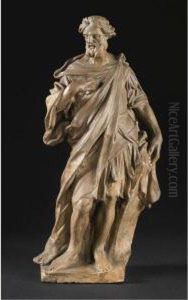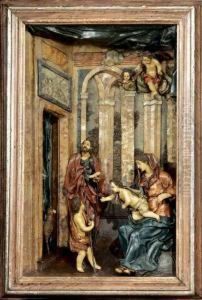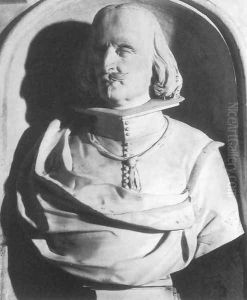Lorenzo Vaccaro Paintings
Lorenzo Vaccaro was an Italian sculptor and architect who was prominent in the Baroque period, particularly within the artistic circles of Naples, Italy. He was born in 1655 in Naples to a family of artists; his father, Lorenzo Vaccaro senior, was also a sculptor, which provided the younger Lorenzo with a conducive environment for nurturing his artistic talent.
Vaccaro's work reflects the dynamism and theatricality of the Baroque style. He was particularly known for his skill in working with marble and other materials to create expressive, lifelike figures. His sculptures often exhibited a masterful handling of drapery and the human form, with a strong sense of movement and emotion that was typical of the period.
During his career, Lorenzo Vaccaro received numerous commissions from religious institutions, as well as from the aristocracy. His contributions to the artistic landscape of Naples were significant, and he had a considerable influence on the development of Neapolitan Baroque sculpture. Among his notable works are the marble statues at the church of San Domenico Maggiore and the sculptures at the Certosa di San Martino, both in Naples.
Vaccaro was also involved in the restoration and design of architectural projects, providing designs for altars and chapels, which further reflected his versatile abilities as an artist and architect. He worked closely with other prominent artists of his time, which helped to foster a vibrant artistic community in Naples.
Lorenzo Vaccaro passed away in 1706 in Naples. His legacy continued through his son, Domenico Antonio Vaccaro, who was also a well-known artist in his own right, further contributing to the Vaccaro family's artistic heritage. Lorenzo's works remain an integral part of Naples' rich cultural history and continue to be studied and admired for their artistic significance within the Baroque movement.


